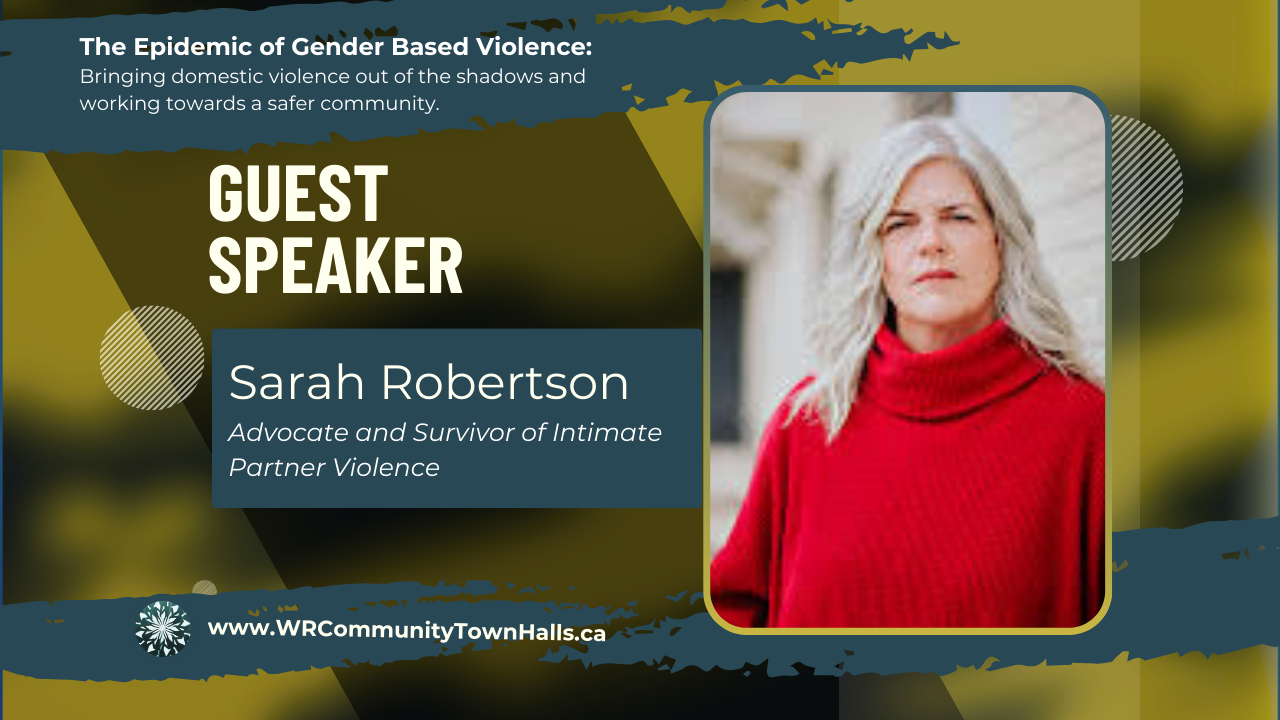|
|
The Epidemic of
|
Sarah Robertson is a former Director on the Board at Women’s Crisis Services of the Waterloo Region. She is employed in the child welfare sector and is a survivor of Intimate Partner Violence. She is an advocate for supports and resources for families that have experienced violence and seeks to improve how we assess risk to women and children.
Sarah will focus her presentation on Coercive Control as it is often misunderstood and minimized in terms of psychological harm and risk of lethality.
Sarah will focus her presentation on Coercive Control as it is often misunderstood and minimized in terms of psychological harm and risk of lethality.
Presentation Footage
|
|
|
|
Survivor Insights on Coercive Control & Domestic Violence: Sarah Robertson
- Coercive Control as a Core Aspect of Domestic Violence: Sarah Robertson highlights the insidious nature of coercive control, often beginning subtly with 'love bombing' and progressing to isolation and manipulation.
- Misconceptions and Lack of Awareness: Robertson emphasizes how domestic violence can be misunderstood or missed entirely, particularly in cases where physical violence is not immediately apparent.
- Impact on Children and Family Dynamics: The complexities of domestic violence are magnified when children are involved, deciding to leave an abusive relationship even more challenging.
- Importance of Support Systems: Accessing support services like crisis lines and community programs is crucial for victims, particularly during separation, which is often the most dangerous time.
- Navigating the Family Court System: The challenge of conveying the experience of domestic violence in family court settings and the positive changes in laws and practices that aid survivors.
Sarah Robertson, speaking from her personal experience as a survivor of domestic violence, provides a unique and poignant perspective on the issue. She begins by addressing the concept of coercive control, a form of manipulation and abuse that often starts subtly and escalates over time. Robertson reflects on her initial inability to recognize the signs of abuse, particularly 'love bombing' – a deceptive showering of affection used for manipulation.
She points out the gradual nature of coercive control, which starts with small, often unnoticeable actions that slowly isolate the victim from their support system. This isolation is a deliberate tactic used by the abuser to gain control and prevent others from noticing the abuse. Robertson highlights the common experience of self-doubt and confusion among victims, exacerbated by tactics like gaslighting.
Robertson's account also touches on the complexities that arise when children are involved. She discusses the heightened sense of fear and responsibility she felt not only for her safety but also for her children. This added dimension makes escaping from an abusive relationship even more complicated and perilous.
She emphasizes the critical role of support services during these times, such as Women's Crisis Services and distress lines, which provide essential guidance and emotional support. Robertson also discusses the challenges of navigating the family court system as a survivor of domestic violence, a process that can be daunting and overwhelming.
In her conclusion, Robertson offers practical advice for safety planning, including documenting interactions, altering routines, and establishing support networks. She stresses the importance of setting clear boundaries and acknowledges the long and challenging journey of recovery from domestic violence. Robertson’s insights underscore the necessity of community support and the importance of projects and services that aid survivors.
Finally, she addresses the difficulty of initiating conversations about domestic violence with loved ones. Robertson advocates for a gentle approach, emphasizing the importance of being a supportive, non-judgmental presence for those who may be experiencing domestic violence. Her story is a powerful testament to the resilience of survivors and the crucial need for awareness, support, and actionable change in addressing domestic violence.


